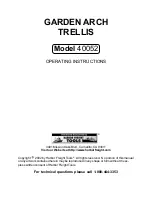
5
4: LOG
I
NSTALLING THE PADDLE WHEEL UNIT.
IMPORTANT:
Read and fully understand the installation instructions and only
proceed if you possess the required skills and correct tools.
WARNING:
Always wear safety glasses and a dust mask when installing to
avoid personal injury.
WARNING:
Immediately check for leaks when the boat is put back in the
water.
WARNING:
The O-rings must be intact and, the lower one,
properly lubricated to make a watertight seal.
CAUTION:
Never use solvents or products that contain solvents which could
attack the plastic.
IMPORTANT:
The sensor in manufactured from high impact polymer and is
designed for use on the outer skin of a fibre glass hull. Never install the sensor
in a wooden hull, since swelling of the wood could fracture the plastic.
IMPORTANT:
Ensure the hull is of constant thickness under the skin fitting
flange so the nut will fit squarely against the hull.
The paddle wheel should be installed at a point in the hull where:-
1/
It is immersed at all attitudes under power or sail.
2/
The blades of the paddle wheel are presented with a smooth flow of
water corresponding to the vessel's speed through the water. On displacement
hulls this is usually about amidships, but on planing hulls it should be as far aft
as possible.
3/
It should be easily accessible in the bilges for cleaning and laying up.
A blanking cap is provided to seal the skin fitting when the paddle wheel is
removed.
4/
It is not vulnerable to damage from unforgiving surfaces such as
trailers and lifting slings.
Once a suitable location has been selected, with the boat out of the water, drill
a 42mm hole perpendicular to the hull from the outside of the boat. Now sand
and clean the hole, inside and outside, to ensure the sealant will properly
bond to the hull.






































